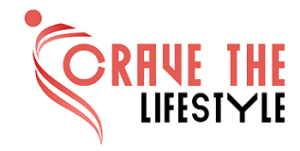A typical objective for people getting back into shape after extended periods of idleness, sickness, or injury is to regain lost muscle mass. The process of regaining muscle mass varies greatly depending on a number of variables, such as age, food, exercise routine, prior training experience, and individual physiology. Individuals may more successfully plan their fitness journey and establish reasonable goals if they have a clear understanding of the normal timescales and important factors associated with muscle mass restoration.
Loss at First and Memory of Muscle
Initial decreases in muscle mass, sometimes visible within a few weeks, may happen rather fast when attributed to circumstances such as sickness or detraining. But a big part of it is muscle memory, the phenomenon wherein previously grown muscles prefer to restore bulk and strength more quickly than freshly acquired ones. This effect makes it possible for those who have received prior training to rebuild muscle mass more quickly than those who have not. Now how long does it take to regain muscle mass? We need to dig deeper.
Timetable for Putting on Muscle
The time it takes to recover back lost muscle mass varies greatly depending on a number of variables. Within a few weeks to several months of returning to an organized resistance training program, notable muscle mass may regain for people with a history of regular training and muscular growth. It may take longer for beginners or those starting exercise again after a lengthy break to see results, but most people see improvements within the first few months.
Factors Influencing the Rate of Regeneration
The pace at which muscle mass is recovered depends on a number of variables, including age, hormone levels, genetics, dietary consumption, and exercise volume. Younger people and those with a history of muscular growth may regenerate their muscles more quickly because of their higher muscle memory and increased physiological reactivity to resistance exercise. Sufficient rest, a balanced diet, and an adequate protein intake are essential for promoting muscle regeneration and maximizing recovery.
Recovery from Injuries and Rehabilitation
To properly restore muscle mass, individuals recuperating from surgery or injury may need to participate in an organized rehabilitation program. In order to restore strength and enhance muscular function, rehabilitation procedures usually include functional movements, joint mobility exercises, and progressive resistance exercises catered to the impacted muscles.
Conclusion
In conclusion, disciplined resistance exercise, a healthy diet, and persistent work may help you restore the muscle you’ve lost. The amount of time it takes for muscle regeneration to occur varies greatly based on personal characteristics including age, degree of prior fitness, and commitment to a well-rounded exercise program. Individuals may efficiently restore muscle mass, boost strength, and meet their long-term fitness objectives by adhering to a balanced lifestyle, comprehending the principles of muscle hypertrophy, and putting these tactics into practice.


 Why You Should Join a Minecraft Towny Server Today
Why You Should Join a Minecraft Towny Server Today  The Science Supporting Natural Wellness from Green Kratom
The Science Supporting Natural Wellness from Green Kratom  Myths About CBD That Need to Be Debunked
Myths About CBD That Need to Be Debunked  How to protect yourself when using a deep web search engine?
How to protect yourself when using a deep web search engine?  Are CBD Gummies for Anxiety a Miracle Cure?
Are CBD Gummies for Anxiety a Miracle Cure?  Liquid Vaults: Ether.fi unlocks automated DeFi earnings
Liquid Vaults: Ether.fi unlocks automated DeFi earnings  How to share legal advice securely using self-destructing notes?
How to share legal advice securely using self-destructing notes?  Maximize your wins: Top Strategies for Football Betting in Online Casinos
Maximize your wins: Top Strategies for Football Betting in Online Casinos  Five Businesses You Could Start Today for Additional Income
Five Businesses You Could Start Today for Additional Income 